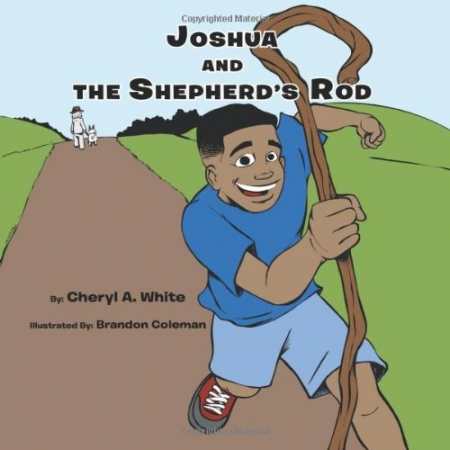
Joshua and the Shepherd's Rod
Cheryl A. White writes of miracles from heaven in her new children’s book, Joshua and the Shepherd’s Rod. Previously involved in the children’s ministry in her church, White speaks here of Christian faith, prayer, and God’s goodness. Capably illustrated by Brandon Coleman, the book is intended for students in the lower elementary grades or for adults to read aloud to younger children.
White’s main characters are a poor mother and her earnest and helpful young son, Joshua. Faithful, they pray to God, believing that “He will provide what we need.” To this point, the message is a solid one that follows religious doctrine. When the shepherd’s rod of the title appears, however, the tone changes from religious to magical.
Acquired in a trade that is meant to reflect Joshua’s faith, the rod is imbued with special powers from above. Much like Jack’s beanstalk, it starts to grow, allowing Joshua to climb to what is apparently God’s home.
Some may be offended that the focus here is material wealth and riches: “… silver, gold, diamonds, crystal and gems … Even the floors were layered with gold.” In “answer to their prayers for provision and prosperity,” God showers the boy and his mother with valuable gemstones. Admittedly, they use some of their newfound wealth to help others who are less fortunate, but the fact remains that the religious message is skewed when equated with material wealth, and there seems no overriding reason for the mother and son to be rewarded this way.
The book’s text is flawed with misused words, such as confusingly for confused, passed for past, and opened for open. Phrases like “with excitement” and “at a fast rate” are repeated two and three times, which is excessive in a book of only twenty pages. Errors in verb tenses and unbalanced structure in sentences—for example, “After shedding tears …, his mother came to his side,” which is about Joshua’s crying, not his mother’s—mar the tale’s clarity. Punctuation is also missing in many places. The accompanying illustrations are expressive and follow the story line well, with the exception of one, which shows an old man holding the shepherd’s rod in his left hand, when the text states that it is in his right. Such details seem trivial, but these are the sorts of little things that children tend to notice in their storybooks.
A careful edit would help the text, but solidifying the book’s message is the more important issue. Joshua and the Shepherd’s Rod has potential as either a religious book or a fantasy, but the combination of the two is troubling. Parents wishing to instill Christian values may balk at the materialistic nature of God’s rewards to the story’s characters, and those who prefer the fairy-tale, magical aspects of the book may not appreciate the religious overtones. The balance is a difficult one, and it has not been achieved here.
Reviewed by
Cheryl Hibbard
Disclosure: This article is not an endorsement, but a review. The publisher of this book provided free copies of the book and paid a small fee to have their book reviewed by a professional reviewer. Foreword Reviews and Clarion Reviews make no guarantee that the publisher will receive a positive review. Foreword Magazine, Inc. is disclosing this in accordance with the Federal Trade Commission’s 16 CFR, Part 255.
